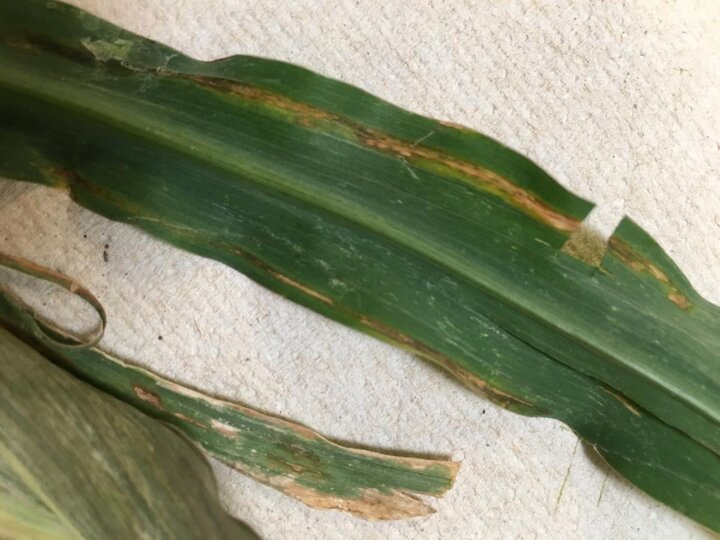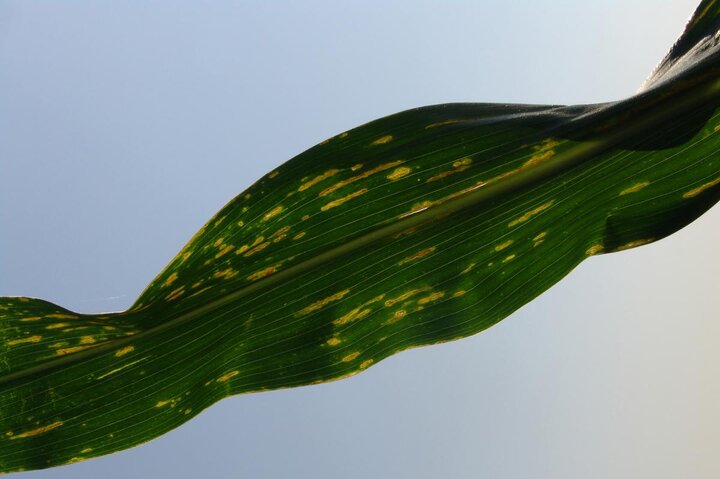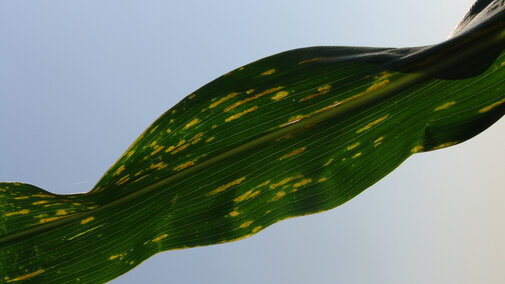

Bacterial leaf streak disease was confirmed on a sample submitted to the UNL Plant and Pest Diagnostic Clinic from Adams County in south central Nebraska. The corn plants were at the V4 growth stage (fourth vegetative leaf) and represent the earliest that the disease has been confirmed in a field. However, the disease has been confirmed in emerging (VE) corn in the greenhouse, so it can likely develop anytime during the season.
Nebraska Extension Plant Pathologist Tamra Jackson-Ziems discusses bacterial leaf streak in corn on this week's Market Journal.
The disease is likely in other fields since its 2016 distribution was confirmed in 51 Nebraska counties. The bacteria can overwinter in Nebraska and may redevelop in the same fields where it occurred previously. There are also unconfirmed reports of the disease in Kansas and Colorado.
History
Bacterial leaf streak was reported for the first time in the United States in 2016 in several states, including Nebraska. Previously, the disease had only been reported on corn in South Africa and little research has been conducted on it. The pathogen, Xanthomonas vasicola, also causes gumming disease in sugarcane around the world.
Symptoms
Narrow brown to orange streaks or stripes develop between leaf veins and can be short (

Diagnosis and Management
Diagnosing the disease in the field may be difficult because it appears similar to some other diseases and because the bacteria causing it are not visible to the naked eye and some microscopes. Some hybrids may produce lesions similar to those of gray leaf spot. However, gray leaf spot lesions may more commonly have straight, smooth margins, in contrast to those of this bacterial disease that often have wavy margins. It is possible to have this and other diseases, like gray leaf spot, on the same sample, further complicating diagnosis. For a diagnosis, we recommend and request submission of samples of this bacterial disease to the UNL Plant and Pest Diagnostic Clinic.
Because the disease is caused by a bacterial pathogen, we do not expect foliar fungicides to directly control it. Some bactericides, such as those containing copper, are labeled for use in corn, but their effects have not been studied on this disease. Activity of bactericides is often different from that of foliar fungicides. For example, most bactericides are contact products and not systemic, so they won’t be absorbed by plants, in contrast to many common foliar fungicides. Thus, bactericides may be washed off with rain or overhead irrigation and might require repeated applications for control, making them uneconomical or impractical for use in some corn crops. Other common pest management strategies, such as crop rotation, may be helpful, but the full host range of this pathogen is currently unknown.
Sample Submission
Submit samples to the UNL Plant and Pest Diagnostic Clinic for help identifying this and other diseases.
For More Information
Upcoming issues of CropWatch will summarize research results and ongoing projects focused on bacterial leaf streak.

